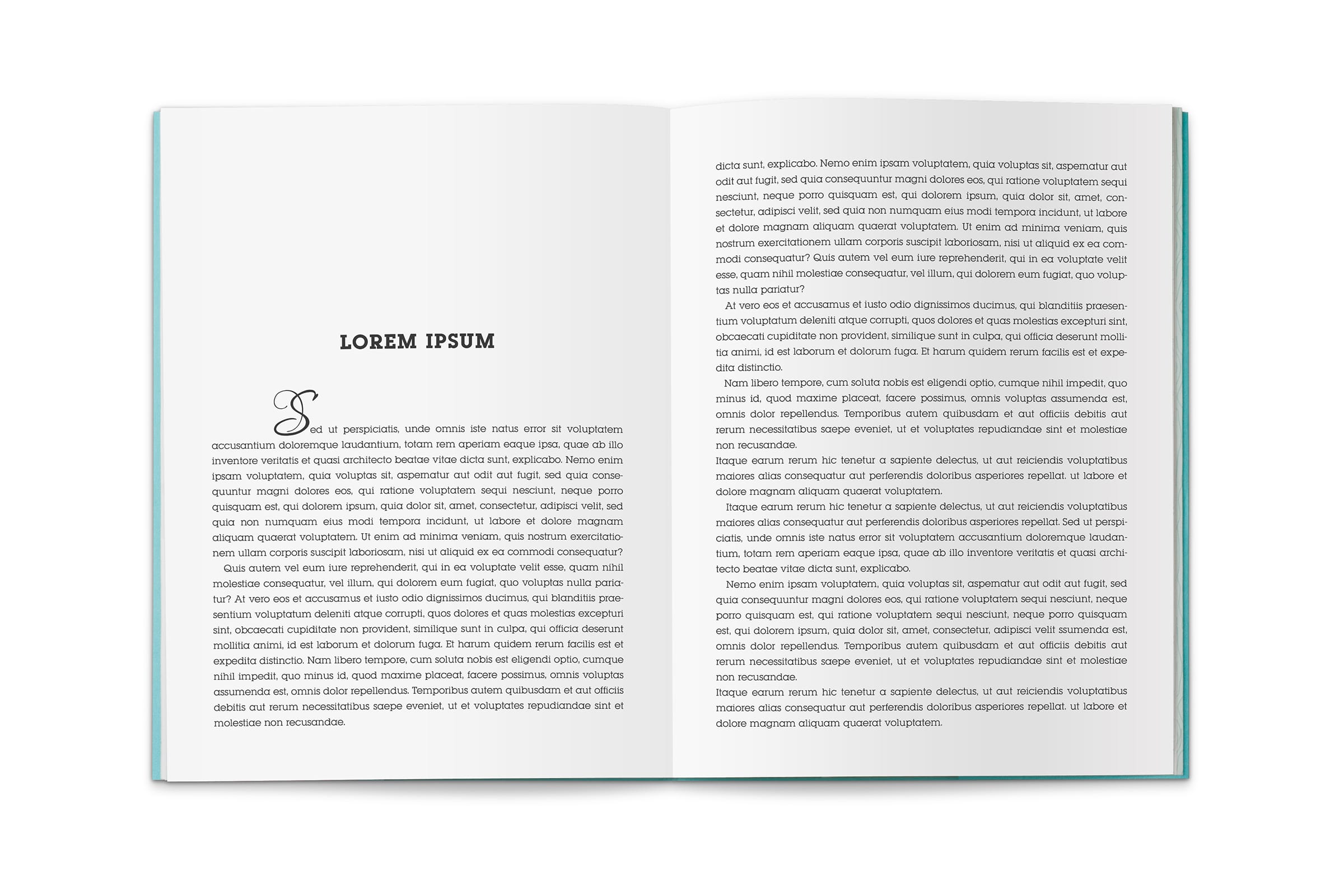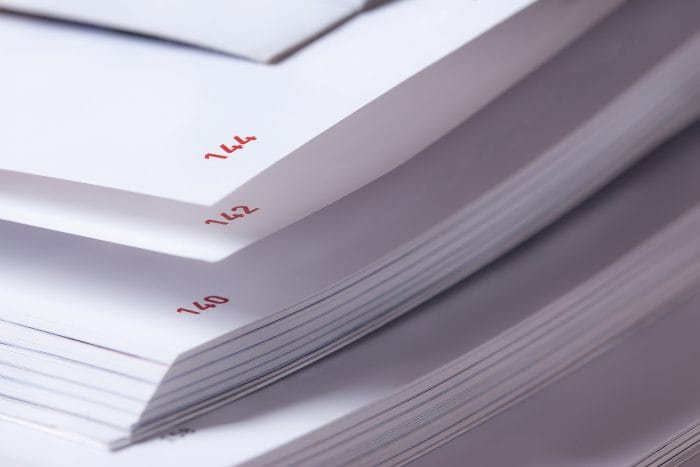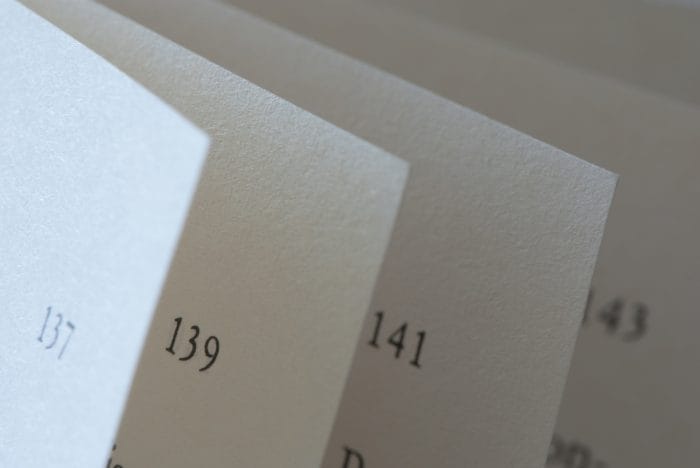A lot of details go into the printing of any book, booklet, or catalog. You have to write the text, find the artwork, design a layout, and arrange it for printing. Once you print something with more than two pages, you must talk about binding, covers, artwork, and other specifications. You’ll also need to know the right way to count book pages.
It sounds like a simple task to count book pages. You know how many pages you have, so why do you need an explanation of counting? Well, when it comes to the printing process, it’s not that straightforward. There is a specific way to count book pages if you want to be sure every part of your book is printed in the correct order.
What Does Page Count Mean?
A common source of miscommunication between printers and authors is the way they count book pages. When you flip through a book or booklet, for instance, you may count each sheet of paper as a page.
To a printer, however, each sheet represents two pages. A sheet refers to the physical sheet of paper. It has a front and a back. Those are the two pages that form one sheet. Each side equals one page. When you count book pages, you must count both sides. Is this confusing? In the next section, we’ll explain this in more detail.
Count Book Pages the Right Way
When you talk to a printing company, it’s important to know you’re both on the same page, so to speak, regarding how to count book pages. This is the only way to get a fair estimate of the price and the time required to print your book.
Printers count pages instead of individual sheets. Because of this, there will always be twice as many pages as there are sheets in a book or booklet. Remember, each side of the sheet counts as one page. So, a book with 100 sheets is a book with 200 pages.
Make Sure You Count Book Pages Instead of Sheets
The most common mistake we see is authors and creators who set up their page count by counting sheets instead of pages.
Counting the sheets doesn’t give you an accurate page count. There are several reasons for this. One is that you can print many pages on one sheet of paper. This is common in booklet and brochure printing. If you fold a sheet of paper in half, you can print four pages on that sheet. This is a common practice for a large variety of printing projects.
Reader’s Spread and Printer’s Spread
When you see a booklet, magazine, or catalog design in a PDF file, you notice that the pages go in numerical order. You can see page one, page two, page three, and so on until the last page. This layout is known as a reader’s spread.
During the printing process, the printer sets up the pages in a layout called a printer’s spread or an imposition. If you look at a printer spread online, you can see that the pages are not in numerical order. That’s because they will appear in order once the pages are printed, collated, folded, and trimmed.
You don’t have to learn how to arrange pages in a printer’s spread. Just leave them in the reader spread, and your printer will change it to printer’s spread. To count book pages in a printer’s spread is tricky. Leave it to the professionals who work with printer spreads every day.
How to Count Book Pages for Printing
What’s the right way to number your pages for printing? Here are the step-by-step guidelines.
1 Start with the front cover. Number this as page 1.
2 Count every page. After you write “1” on the cover, flip the page over and write “2” on the left side of the page. Do this even if you don’t plan to have any text or artwork on that page.
3 Page number 3 will be the first page the reader sees after opening the cover. This may be the first page of text, but it’s page 3 in printing terms.
4 You’ll notice that left-hand pages are even-numbered and right-hand pages have odd numbers.
5 Continue numbering every page of your book or booklet.
6 When you get to the end, close the back cover and number it.
Follow these pointers to count book pages:
- Count and number every page, including those that have artwork or are blank.
- Count both sides of every sheet. Remember, one sheet equals two pages.
- Count the covers as two pages each.
Counting Blank Book Pages
Sometimes, a chapter will finish on a right-hand page. When that happens, most authors add a blank page directly after it. This allows the next chapter to begin on a new, right-hand page. This makes the text flow easily for the reader.
Once you have a full, accurate page count, you can talk to your printer about binding styles and paper stock.
Count Book Pages for Specific Binding Types
The type of binding you choose will determine how many pages to plan for your book. Each binding style sets up the pages differently.
Perfect binding
To get this style, your printer sets up a series of sheets. Each sheet has two sides. Each sheet is scored twice to make room for the spine. This gives you a cover that has four numbered pages and a spine in the middle. The minimum page count for perfect binding is 6 pages.
With perfect binding, you can print on the spine as long as you have enough pages, which is why this is a popular choice for novels and children’s books.
Saddle stitch binding
This uses a single sheet of paper with a front and a back. The sheet is folded in half to create four numbered pages. These are then printed, folded in half, and stitched together. Since the sheets are folded into four pages, your page count must be in increments of four. There is an eight-page minimum for saddle stitching, and you must print an even number of pages.
There is no spine to print on in this style, so it works best for slender booklets. Saddle stitch binding is a popular choice for catalogs and theater programs.
Plastic coil binding and wire-o binding
In plastic coil binding and wire-o binding, each sheet is printed on both sides. The sheets are then printed and trimmed to a specific size. The pages are collated, and the printer punches holes in the edges.
The printer then inserts a plastic coil or wire-o into the holes. This creates a book with no spine that lays flat when it’s open. The page numbers must be in increments of two, and there is an six-page minimum for spiral binding.
Spiral coil binding and wire-o binding are popular choices for instructional books, recipe books, and scrapbooks.
Every Page Counts
When you count book pages correctly, it will help you work with a printer and get a reliable estimate of your printing costs. It’s not difficult to do if you remember to count each side of every sheet of paper.
We hope you have found these tips useful. If you need help with any stage of the printing process, talk to Dazzle Printing. We specialize in printing multipage documents. We offer fast, friendly service, and a satisfaction guarantee. If you’d like to get an estimate for your next printing project, check our our online printing calculators.







